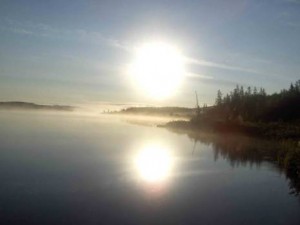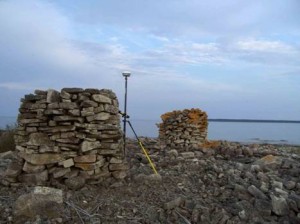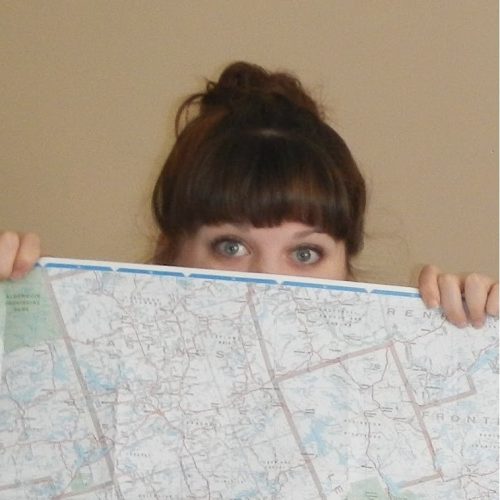43 Degrees North – Surveying and Mapping Solutions
GoGeomatics is continuing the exploration of careers in surveying by interviewing Thomas Hoppe the founder of 43 Degrees North – Surveying and Mapping Solutions, a professional Land Surveying and Geomatics company in Ontario Canada.
GoGeomatics: Thank you for taking the time to answer some question for our members Thomas. Can you tell us a little about 43 Degrees North? We would like to know where you are based out of and what area you service. Who are your clients for the most part? What is your team like?
Thomas Hoppe: 43 Degrees North is situated in Cobourg Ontario in picturesque Northumberland County along the north shore of Lake Ontario. Approximately 60% of our clients are local, however, we also service key clients anywhere in the Ontario. We have provided services from the Atlantic coast in the east, James Bay in the north, Pennsylvania in the south, and Sault Saint Marie to the west. We provide a variety of geo-referenced solutions from boundary surveys, aerial photography ground support, pre-engineering surveys, construction layout, and survey training with an emphasis on GPS applications and technology. For the most part, our clients are municipal/ provincial governments, engineering firms, land developers, and land owners requiring services of a professional surveyor to support their operations.
GoGeomatics: What makes 43 Degrees North different from the other surveyors out there? What sets you apart?
Thomas Hoppe: I wouldn’t say 43 Degrees North is significantly different than other surveyors out there, but what does set us apart is the personal service as well as our desire and ability to utilize new technology to deliver our products and develop solutions that provide cost and time savings to our clients.

GoGeomatics: What made you decide to become a surveyor in the first place?
Thomas Hoppe: Well, I had dropped out of high school and after a brief stint working the factory life, I decided to improve my life by returning to school and then attending college. After the first year, I wanted to do something in the engineering field. I happened by the placement office and there was a brochure asking the question “Do you like to work outside and travel?” That drew my attention, I applied to Ryerson Polytechnic Institute and here I am. To be honest, I have lived in the USA and worked in a good portion of the USA, as well as travelled and worked in Guam, Korea, Japan, and New Zealand.
GoGeomatics: What educational background do you have? What was training to be a surveyor like?
Thomas Hoppe: My education as a surveyor began at Ryerson Polytechnic where I obtained a 4 year bachelor of Technology in Surveying Engineering. I then began my articles to a land surveying company and after 3.5 years and 3 professional exams later, I obtained my commission. During my training, I had to obtain training and practice in a variety of applications whilst reporting to the surveyor I worked for as well as my monitor assigned by the Association of Ontario Land Surveyors. Every 3 months, I was required to write a report on the type of jobs worked on, what specific knowledge base I was developing, and elaborate on the principles learned.
GoGeomatics: As a professional surveyor what is an average day like?
Thomas Hoppe: Being in private practice, I am my own boss, so my average day consists of field work which I really enjoy, research for my projects, and would include face-to-face communications with my customers as well as sitting by the computer and processing the field data to come up with my solutions to the problems of the day. This gives me a good variety of tasks during my day and week and makes the job interesting.

GoGeomatics: What is the best part of your work as a surveyor?
Thomas Hoppe: The best part of my work as a surveyor is the travel to different parts of the country and working on those relationships with clients where your contribution is both appreciated and valued.
GoGeomatics: Is there a project project or contract that you have taken that was more challenging than you first expected? Can you tell us about it?
Thomas Hoppe: One project that was very challenging the first time I attempted it was a simple Hydrographic survey on Lake Ontario. I was working with some coastal engineers on a parcel to be developed along the shore of Lake Ontario where the erosion along the shoreline needed to be considered in the development of the land. The task at first glance was simple, take soundings along the shoreline to where the average depth of water is 3 metres. What I had not anticipated was the bed of Lake Ontario – especially in this location – was primarily limestone and the way the bed had developed, the limestone was essentially a series of mesas under water. I had obtained simple digital sounding equipment linked to my GPS system, but what I didn’t anticipate was finding myself 500 metres off shore in a 13 foot flat bottom boat with a 10 hp motor. For those of you not familiar with the great lakes, the water conditions can change in 20 minutes, and the temperature of the Lake at this time of year gives you 10 – 15 minutes of survival if you decide to go for a swim. It took 3 tries, but eventually I got both the lake, weather, and boat to cooperate together and let me obtain the results.
GoGeomatics: We would like to know what type of geomatics software and instrumentation 43 Degrees North using?
Thomas Hoppe: 43 Degrees North utilizes the new Trimble R6 series of GNSS equipment and both a stand-alone RTK radio telemetry system and a nation-wide Real-Time Network solution where coverage is available. In addition to this, we operate the Trimble 5600 full robotic total station. The data is QA/QC’d by Trimble Business Center software and all drafting/calculations utilize Microsurvey Cad software. In the near future, we intend to start utilizing a terrestrial LIDAR.
GoGeomatics: Many of our members are looking for their first jobs in geomatics. How did you land your first job? What was that like? Any advice for any new graduate from survey programs for today’s job market?
Thomas Hoppe: My first job in surveying was as a third member in a field crew holding the dumb end of the chain. I tried not to let the pay and job description get me down, but I did change jobs 5 times in 2 years to steal experience until I started to article as a professional surveyor. My advice to new graduates is to get on with a company that will have you working in remote projects away from home. You will get to see the world and obtain some great experience. Don’t get yourself into a 9-5 routine, but embrace the occupation and immerse yourself into it.

Thanks for talking to our 5,000 GoGeomatics members. To learn more about 43 Degrees North you can click http://www.43north.ca/ to visit the web site.





Hey there CanadianGIS
I enjoyed your great blog post on 43 Degrees North. I went over this site and I believe you have a lot of excellent information, bookmarked (: